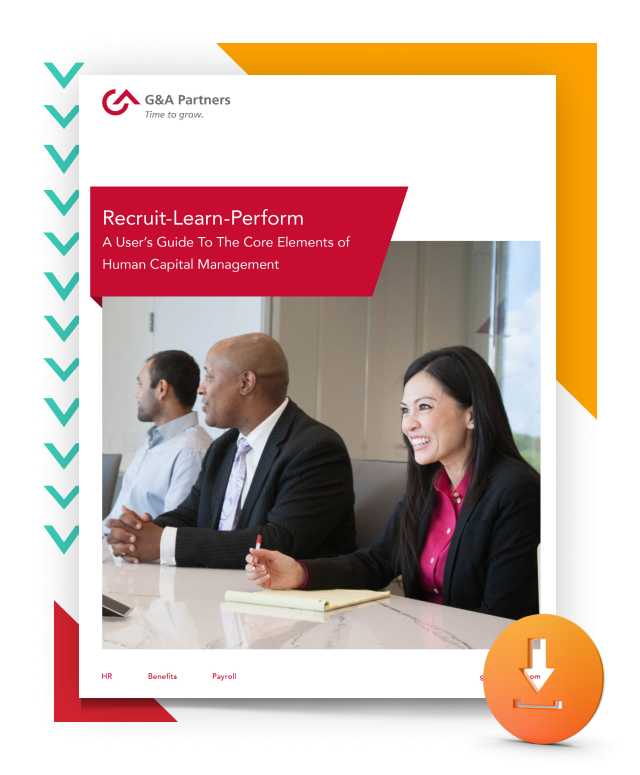In a post-pandemic world, the workplace is undergoing far-reaching change. Companies are adapting as needed—often at breakneck speed—while modifying their core infrastructure (policies, procedures, training, and technology) to effectively support their employees and business.
Years from now, when we look back on this era, we’ll see that we were living through the “Great Workplace Evolution” of our time.
This article is an excerpt from our HR Trends in 2023 Guide, in which our experts break down HR trends expected to unfold in 2023 and best practices that can help your company evolve (and thrive) during your own workplace evolution. (Read the full HR Trends in 2023 guide here.)
Targeted Change: Incorporating Strategies That Boost Engagement and Minimize Quiet Quitting
Over the past few years, employees began to reevaluate their work life balance—looking at their jobs, career paths, and employers with fresh eyes. En masse, they lobbied organizations and entire industries to adjust job-salary ranges and bolster bedrock benefits with offerings that address their mental, physical, and financial well-being.
With businesses competing for talent, the ongoing, employee-led market put pressure on organizations to reassess their compensation packages, company cultures, and business strategies to keep pace with—and exceed—employee expectations.
What’s Driving This Trend?
Almost 100 million American workers have quit their jobs since the “Great Resignation” started in early 2021, and there is no guarantee that the trend will slow—or reverse—in 2023. Even if rising inflation and stressful economic conditions slow the pace, there is another movement taking shape due to fading employee engagement levels. It’s called “Quiet Quitting” and refers to employees performing their required duties but nothing more—no late hours, no going “above and beyond,” and little dedication to the job or their employer.
Though reasons for the new movement are up for debate, many experts agree that what tops the list are the lack of employee engagement and dissatisfaction with pay. And because these employees believe “it’s easy to get another job,” they’re not concerned about being fired or laid off.
“There are a lot of contributing factors to the trend, but it often boils down to how an employee believes they are being treated,” says Tiffany Guthrie, G&A’s manager of Advanced HR Support. “This can mean they feel their pay isn’t commensurate with their workload and/or responsibilities or they may no longer feel connected to the company or their role in the organization—in a way that transcends a paycheck. Whatever the reason, the labor market is still hot, and what employees may have tolerated in the past, can now spur them to look elsewhere.”
A 2022 Gallup poll reports that quiet quitters make up at least 50% of the U.S. workforce, and HR professionals are taking note. A recent Society for Human Resource Management (SHRM) Research Institute survey reports that more than half (51%) of HR professionals are concerned about the negative impact of the trend. The survey found that:
- 83% believe it will decrease employee morale in the workplace
- 75% report struggling more than usual to motivate employees to go above and beyond
- 70% believe it will decrease employee productivity
- 50% believe it will decrease the quality of employee work products
How HR Can Guide Organizational Change in 2023
2023 is the time to analyze what strategies have—and have not—worked for your business over the past few years, so you can identify sustainable practices and systems that reflect your employee's evolving needs. Your HR representative or partner can be an invaluable resource in this effort—providing you and your managers with steps you can take to help manage change and boost employee engagement levels in your organization.
Five Change Management Best Practices to Consider
1. Do a Deep-Dive with Employees
The best way to find out what your employees want, and need, is to ask them. Your HR representative can help plan and facilitate your efforts to gather employee opinions, ideas, and feedback. They can also collect qualitative and quantitative data through employee surveys, HR analytics tools, one-on-one conversations, and “stay interviews” to help strategize and make proactive organizational changes.
2. Assess Your Total Rewards Strategy
As inflation and the threat of an economic recession put pressure on pocketbooks, employers are looking for affordable ways to avoid the high cost of employee turnover by helping workers manage rising costs. Instead of focusing solely on wage or salary increases, G&A Partners HR advisor Arielle Carver says that her clients are considering a variety of incentives, such as one-time or retention bonuses, gas stipends, hybrid or remote work options, gift cards, company paid lunches, and additional paid time off (PTO).
3. Refine or Redefine Managers’ Roles
As the modern workplace changes, the role of managers should evolve as well. Today, the most effective managers are equal parts leader, coach, mentor, and advocate. They help cultivate their employees’ careers and provide clear pathways for growth to improve retention and develop future company leaders. But in many organizations, managers don’t receive the training necessary to become a positive driving force for employees. In fact, Gallup’s poll found that only one in three managers today are engaged at work. Focus on reskilling and supporting your managers so they are better positioned to successfully guide and inspire their teams.
4. Refocus Recruiting, Onboarding and Retention Efforts
Companies are facing significant employee recruitment and retention challenges. As they navigate changes in the workplace, HR personnel are tasked with refining recruiting strategies to meet candidates’ preferences, implementing dynamic and comprehensive onboarding programs, and designing retention strategies that encourage employees to stay. It’s estimated that about one in three new hires will leave a job in the first 90 days, according to the 2022 Job Seeker Nation Report, so an excellent onboarding experience is a must.
5. Delve into Generational Values
Employees of all ages—and generations—say company culture impacts their decision to accept a job offer. However, Baby Boomers, Gen Xers, Millennials, and Gen Zers value different aspects of company culture. “All four generations in today’s workforce value different programs, policies, and benefits, presenting challenges and opportunities for organizations that are looking to attract and retain top talent,” said Leslie Patterson, EY Americas and US Diversity, Equity and Inclusiveness Leader, in EY Americas’ “2022 EY US Generation Survey reveals impact company culture plays in employee retention.”
How G&A Can Help
G&A Partners offers access to HR experts with years of experience helping businesses develop their employees, improve their workplace cultures, implement new HR processes and procedures, and more. Schedule a consultation with one of our trusted business advisors to learn more.


